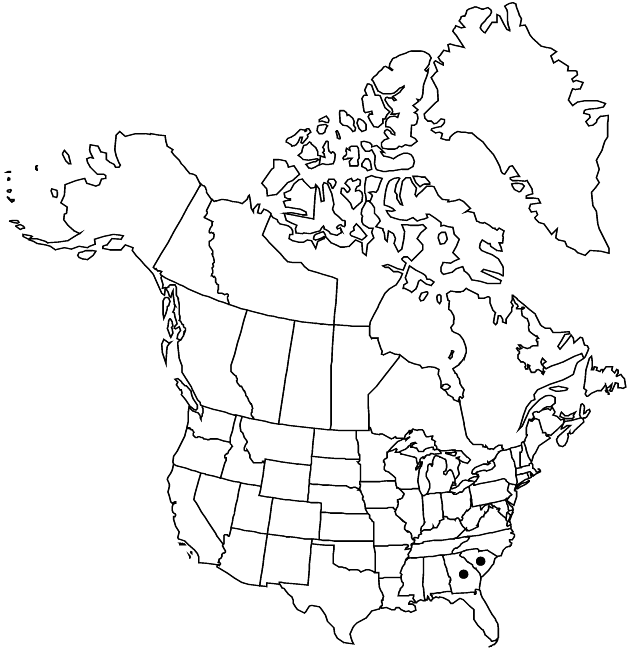Solidago kralii
Sida 20: 1606, figs. 1–11. 2003.
Plants 65–110 cm; rhizomes creeping. Stems 1–10 (–50), ascending to erect, glabrous or sparsely strigillose, copiously viscid-resinous in arrays. Leaves: basal gradually tapering to winged petioles, blades oblanceolate, (25–) 100–200 × (4–) 15–28 mm, membranous, margins shallowly serrate apically (teeth less than 1 mm), finely ciliate, midnerves prominent, faces glabrous, viscid; rosettes present at flowering, at ends of elongated rhizomes, 1st leaves the smallest; proximal to mid cauline similar, sessile, blades linear-elliptic, quickly reduced; mid-blades 40–80 × 6–9 mm, reduced distally, margins entire; distal sessile, blades linear-elliptic to linear, 10–35 × 1–3 mm, reduced in arrays. Heads 50–200 (1–15 per branch), in narrowly thyrsiform, paniculiform arrays, 9–30 × 4–5 cm, longer branches ascending, 2–10 cm. Peduncles sparsely strigillose, copiously resinous, naked proximally to bracteolate near heads; bracteoles usually 1–3. Involucres campanulate, 5–7 mm. Phyllaries in 3–4 series, strongly unequal, apices obtuse, rounded to slightly cuspidate, ciliate, sparsely, finely strigose, obscured by exudate, copiously resinous; outer ovate (1.5–2 mm), mid narrowly ovate (3–4 × 1.5 mm), inner linear-lanceolate. Ray-florets 3–5 (–7); laminae 2.5–3.5 × 1–1.5 mm. Disc-florets 10–16; corollas 5–6 mm, lobes 1–1.5 (–1.8) mm. Cypselae fusiform to narrowly obconic, 3–5 mm, ribs 5–8, golden brown, darker than intercostal portions, thin, glabrous; pappi 4–5 mm (sometimes strongly clavate). 2n = 18.
Phenology: Flowering Aug–Sep.
Habitat: Turkey oak and pine scrub sandhills
Elevation: 40–100 m
Discussion
Of conservation concern.
Solidago kralii is closely related to S. simplex, S. plumosa, and S. arenicola but occurs in a different habitat; it is much more copiously viscid-resinous than those species.
Selected References
None.
Lower Taxa
"elongated" is not a number.
